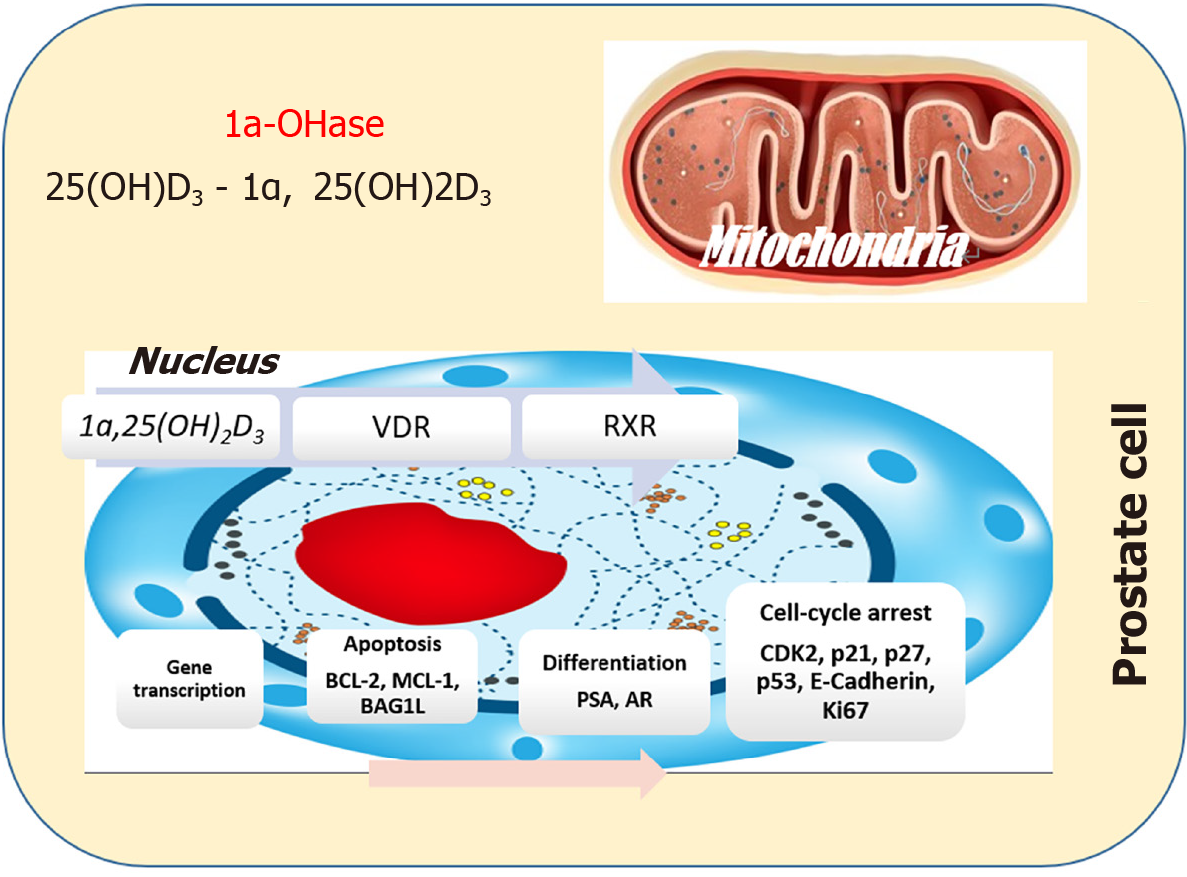Copyright
©The Author(s) 2024.
World J Clin Oncol. Feb 24, 2024; 15(2): 169-174
Published online Feb 24, 2024. doi: 10.5306/wjco.v15.i2.169
Published online Feb 24, 2024. doi: 10.5306/wjco.v15.i2.169
Figure 1 Illustrates the mechanism of vitamin D3 activity in prostate cells.
Both 25-hydroxyvitamin D3 [25(OH)D3] and 1a,25-dihydroxyvitamin D3 [1a,25(OH)2D3] enter the cells. Within the mitochondria, 25(OH)D3 is transformed into 1a,25(OH)2D3 by an enzyme called 25(OH)D-1a-hydroxylase (1a-OHase). When 1a,25(OH)2D3 binds to the vitamin D receptor (VDR), the VDR forms a complex with the retinoid X receptor. This complex then attaches to specific vitamin D-response elements in the promoter region of genes responsive to vitamin D3, leading to the activation of gene transcriptionß. VDR: vitamin D receptor; RXR: retinoid X receptor.
- Citation: Cassell A, Konneh S. Unlocking the potential-vitamin D in prostate cancer prevention. World J Clin Oncol 2024; 15(2): 169-174
- URL: https://www.wjgnet.com/2218-4333/full/v15/i2/169.htm
- DOI: https://dx.doi.org/10.5306/wjco.v15.i2.169









